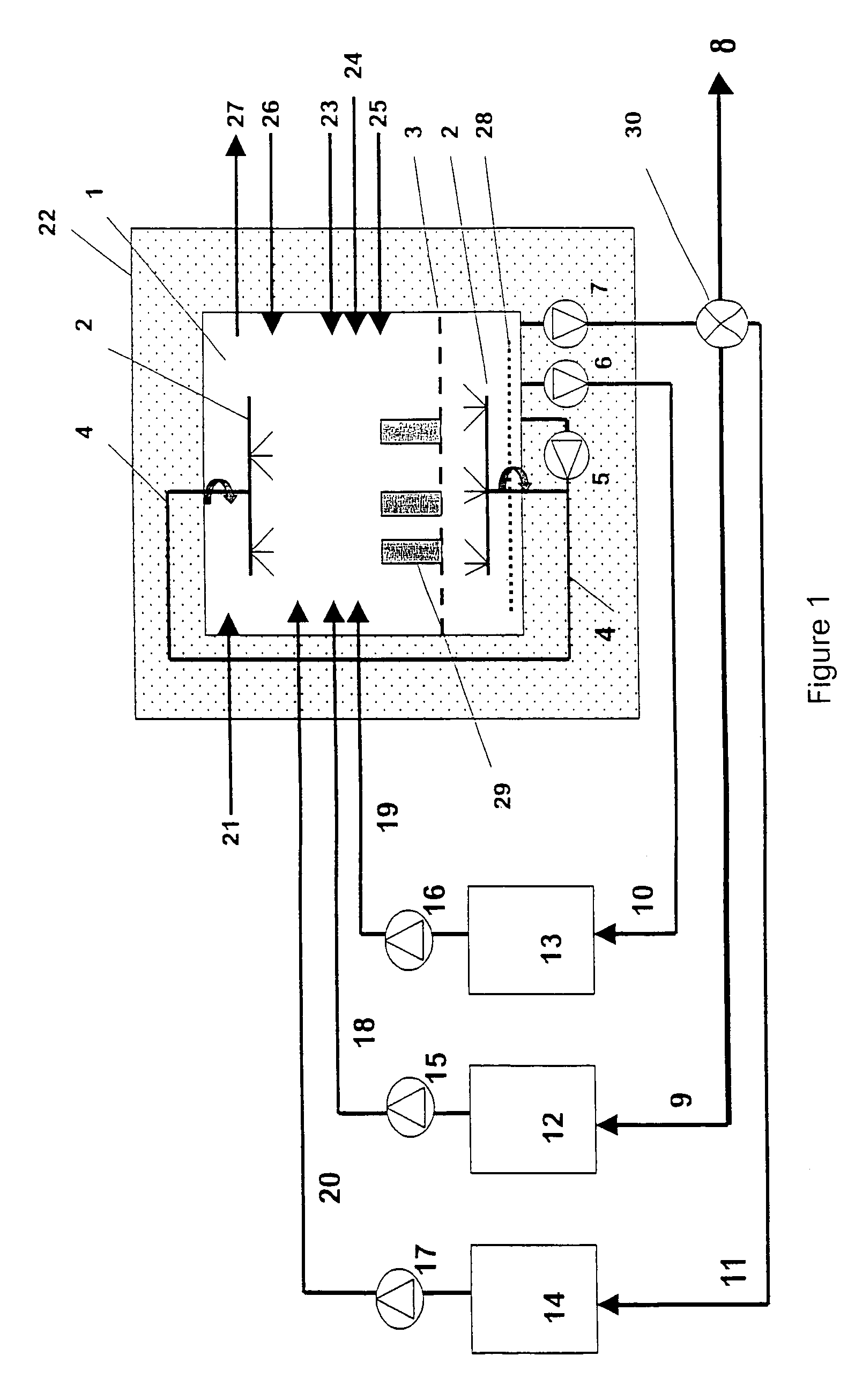Stripping apparatus and method for removal of coatings on metal surfaces
a technology of metal surface and stripping apparatus, which is applied in the direction of vacuum evaporation coating, coating, cleaning using liquids, etc., can solve the problems of inability to strip complex coatings, and inability to meet the requirements of a large number of chemical substances, etc., to achieve the effect of easy and rapid stripping of complex coatings
- Summary
- Abstract
- Description
- Claims
- Application Information
AI Technical Summary
Benefits of technology
Problems solved by technology
Method used
Image
Examples
example 1
[0031]In Tests A to D as referred to above, an aqueous solution containing 100 g / L NaOH (pH 14.4) and 20 g / L KMnO4 as well as 10 g / L NaCl, used at room temperature, took about 15 to 35 minutes to strip steel drills and tools coated with AlCrN.
example 2
[0032]A solution containing 200 g / L NaOH (pH 14.7) and 5 g / L KMnO4 took 2.5 hours to strip AlCrN-coated steel drills with a layer thickness of 3 μm; coating parameters as in Test D.
example 3
[0033]In a solution containing 200 g / L NaOH and 5 g / L KMnO4, AlCrN-coated steel drills with a layer thickness of 3.5 μm were stripped at 60° C. within 35 to 50 minutes; coating parameters as in Tests A, B, C.
PUM
| Property | Measurement | Unit |
|---|---|---|
| stripping temperature | aaaaa | aaaaa |
| stripping temperature | aaaaa | aaaaa |
| temperatures | aaaaa | aaaaa |
Abstract
Description
Claims
Application Information
 Login to View More
Login to View More - R&D
- Intellectual Property
- Life Sciences
- Materials
- Tech Scout
- Unparalleled Data Quality
- Higher Quality Content
- 60% Fewer Hallucinations
Browse by: Latest US Patents, China's latest patents, Technical Efficacy Thesaurus, Application Domain, Technology Topic, Popular Technical Reports.
© 2025 PatSnap. All rights reserved.Legal|Privacy policy|Modern Slavery Act Transparency Statement|Sitemap|About US| Contact US: help@patsnap.com


